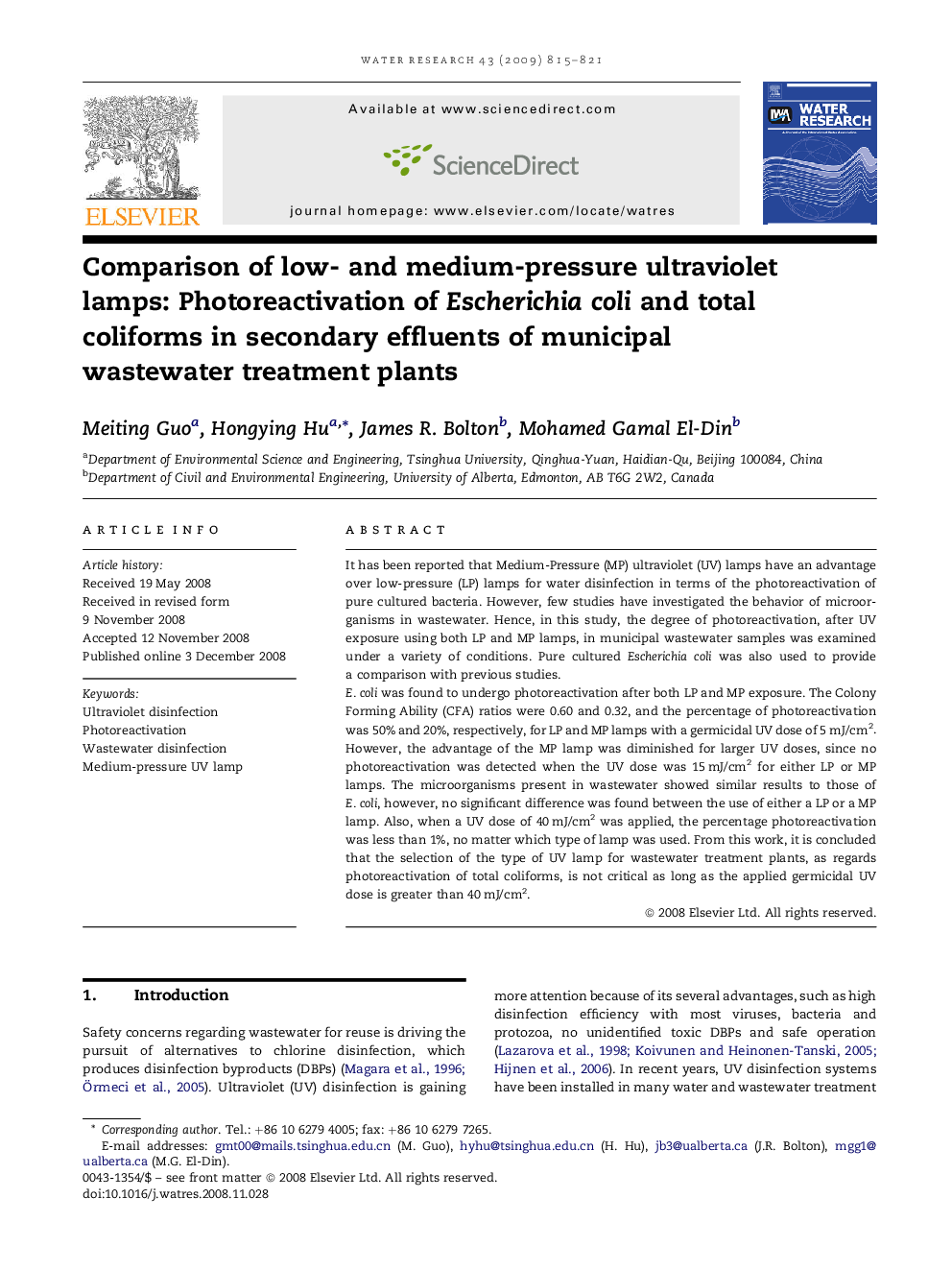| Article ID | Journal | Published Year | Pages | File Type |
|---|---|---|---|---|
| 4485298 | Water Research | 2009 | 7 Pages |
It has been reported that Medium-Pressure (MP) ultraviolet (UV) lamps have an advantage over low-pressure (LP) lamps for water disinfection in terms of the photoreactivation of pure cultured bacteria. However, few studies have investigated the behavior of microorganisms in wastewater. Hence, in this study, the degree of photoreactivation, after UV exposure using both LP and MP lamps, in municipal wastewater samples was examined under a variety of conditions. Pure cultured Escherichia coli was also used to provide a comparison with previous studies.E. coli was found to undergo photoreactivation after both LP and MP exposure. The Colony Forming Ability (CFA) ratios were 0.60 and 0.32, and the percentage of photoreactivation was 50% and 20%, respectively, for LP and MP lamps with a germicidal UV dose of 5 mJ/cm2. However, the advantage of the MP lamp was diminished for larger UV doses, since no photoreactivation was detected when the UV dose was 15 mJ/cm2 for either LP or MP lamps. The microorganisms present in wastewater showed similar results to those of E. coli, however, no significant difference was found between the use of either a LP or a MP lamp. Also, when a UV dose of 40 mJ/cm2 was applied, the percentage photoreactivation was less than 1%, no matter which type of lamp was used. From this work, it is concluded that the selection of the type of UV lamp for wastewater treatment plants, as regards photoreactivation of total coliforms, is not critical as long as the applied germicidal UV dose is greater than 40 mJ/cm2.
